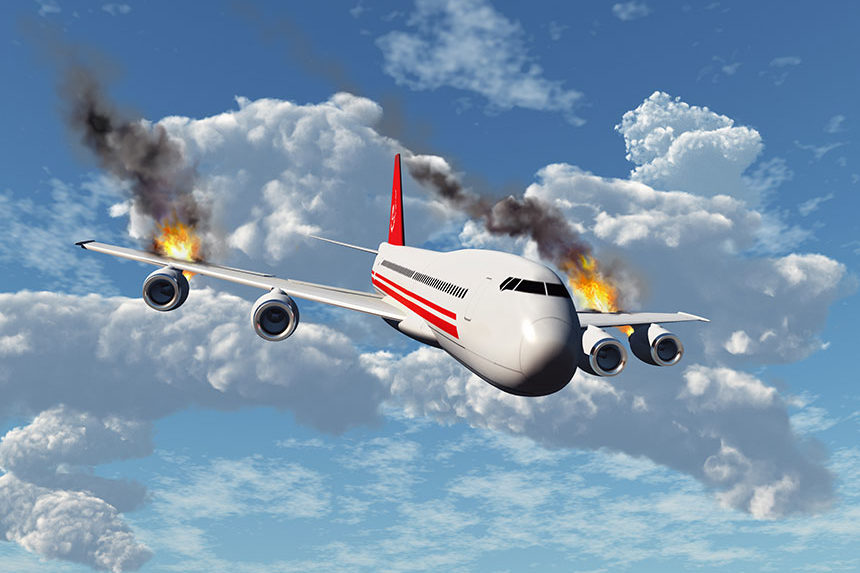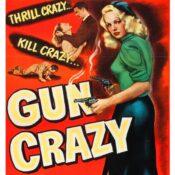While any kind of art can exist at any moment, we find that certain eras can be defined by a particular kind of entertainment. When it comes to film, the 1950s were certainly the decade of the Western, while the 1980s saw a big boom in the action genre. 50 years ago this week, one production planted the flag for what would become one of the most successful genres of the 1970s: the disaster film. That movie was Airport, and its impact on cinema shouldn’t be underestimated.
Variations of disaster films have existed almost as long as the movies themselves. They took various shapes, from early adaptations of the story of the Titanic to the giant monster and alien invasion movies of the 1950s. Many of those films had a fantastical or historical element; although some did intersect with real-world situations, few were about disasters coming from an everyday event, like catching a flight.
Airport itself didn’t appear out of thin air; it was adapted from Arthur Hailey’s 1968 novel of the same name. Hailey broke big in 1955 with his screenplay Flight into Danger; it was filmed for Canadian television and then adapted for the big screen by Paramount as Zero Hour! He wrote successfully for the screen and in print, but he really cracked the book world open with 1965’s Hotel; that book dug into the inner workings of a hotel against the backdrop of multiple unfolding crises, including a thief, the building’s financial peril, and the dangerous freefall of an elevator. In that work and others, Hailey was distinguished by his research and his use of ordinary people in traumatic circumstances. He applied that formula to the Airport novel, which depicted a fictional Chicago airport trying to avert disaster during a snowstorm. The hit novel got picked up by Universal, and writer-director George Seaton set about creating the adaptation.
The trailer for Airport. (Uploaded to YouTube by YouTube Movies)
Seaton already had a long-established career in Hollywood, which included playing The Lone Ranger on the radio and writing and directing his Christmas classic Miracle on 34th Street from the Valentine Davies story. His producer, Ross Hunter, also had a long record and plenty of hits under his belt. The duo was able to pull in major star power for the film, including Burt Lancaster, Dean Martin, and Jacqueline Bisset. George Kennedy was cast as chief mechanic Joe Patroni; you haven’t seen the last of either.
The film had its New York premiere 50 years ago this week, presented in 70mm at Radio City Music Hall (a first). Critics were, to be kind, NOT kind. However, the film’s mix of recognizable stars, building tension, and cathartic ending (the heroic Patroni clears a stuck jet from a runway, allowing another disabled jet to land safely) made it a hit with audiences. It’s $100 million take at the time would be equivalent to $662 million of today’s dollars, putting it in the vicinity of modern blockbusters like The Sixth Sense and various Marvel, Harry Potter, Star Wars, and Kung Fu Panda installments.
With Airport a hit, the next step was clear. As Tina Fey once put it, “This is Hollywood, and if something kind of works, they’ll just keep doing it until everybody hates it.” Throughout the rest of the decade three more Airport films followed (the imaginatively named Airport ’75, Airport ’77, and The Concorde: Airport ’79). The formula of “lots of stars/plane in danger” remained intact, and Kennedy returned as Patroni in all three sequels. The success of the first film wasn’t lost on other studios, as everyone in town began mining novels and original screenplays for more “disaster pictures.”
The trailer for The Poseidon Adventure. (Uploaded to YouTube by YouTube Movies)
Two years later, another huge entry took to the box office seas with Fox’s The Poseidon Adventure, which was based Paul Gallico’s 1969 novel. The movie was produced by Irwin Allen, who was well known for his run of science-fiction TV shows that included Lost in Space, Voyage to the Bottom of the Sea, Time Tunnel, and Land of the Giants. But after Poseidon, he’d be known as “The Master of Disaster.” The story of a capsized ocean liner and the people fighting to escape it received better reviews than Airport and made almost as much money; it also earned two Oscars (visual effects and song for “The Morning After”) and a Golden Globe for Best Supporting Actress for Shelley Winters.
Allen went out of the ocean and into the fire with 1974’s The Towering Inferno. The movie combined elements from two adapted novels and featured two of the biggest leading men in the world, Paul Newman and Steve McQueen, at the head of a massive cast. Inferno set the box office (groan) on fire and earned praise from key critics like Roger Ebert, who later called it “a brawny blockbuster of a movie, by far the best of the mid-1970s wave of disaster films.” It pulled in eight Oscar nominations, winning three (Cinematography, Film Editing, and Original Song for “We’ll Never Love This Way Again”) and was the second-highest grossing film of the year (behind only Blazin’ Saddles, but topping Airport’s massive 1970 haul). The genre only expanded throughout the rest of the ’70s with Earthquake, Hurricane, and more. One could make the argument that 1975’s Jaws fits in the group, but its overall quality has resulted in the movie being claimed by fans and filmmakers of horror, suspense, and character drama, among others. Terrorism-related disaster films like Black Sunday and Rollercoaster also figured into the genre.
The trailer for Jaws. (Uploaded to YouTube by Movieclips Classic Trailers)
Despite its success and the appellation of “The Golden Age of the Disaster Genre” being applied to the decade, the genre faced stiff competition from other categories. Horror and urban paranoia films like Rosemary’s Baby, The Exorcist, Halloween, and Alien courted mass audiences while providing the same kind of visceral thrills. Complex dramas and crime films from the likes Scorsese and Coppola emerged. And Jaws itself presaged an environment that would find later genre entries competing against legitimate crowd-pleasers like Star Wars, Rocky, Smokey and The Bandit, and the Travolta-powered one-two punch of Saturday Night Fever and Grease.
1979 ended up being the last year of the “Golden Age” as Allen’s The Swarm, Meteor, Airport ’79, and volcanic eruption piece When Time Ran Out all tanked at the box office. 1980 brought Airplane!, a spoof of the genre and air-disaster films in particular; that movie’s success was another signal that the category was more or less over. However, like many other forms of entertainment, “disaster” cinema didn’t die as much as it evolved into other things. Updated variations of those ’50s alien invasion films appeared in the form of Independence Day, and spectacles like James Cameron’s Titanic and films like Volcano and Twister covered similar ground. The sci-fi-driven “pandemic” splinter actually started with 1971’s The Andromeda Strain, but it’s returned over the years in the form of films like Outbreak; the related horror subgenre of the zombie apocalypse shares traits with pandemic and disaster films, notably with science-focused entries like World War Z. The modern super-hero genre incorporates some disaster elements, with the plots of both Batman v. Superman: Dawn of Justice and Captain America: Civil War turning in part on how society deals with the widespread destruction brought on by super-powered battles. In a way, despite competition and parodies and diminishing returns, the disaster genre still managed to survive even itself.
Featured image: Shutterstock
Become a Saturday Evening Post member and enjoy unlimited access. Subscribe now



